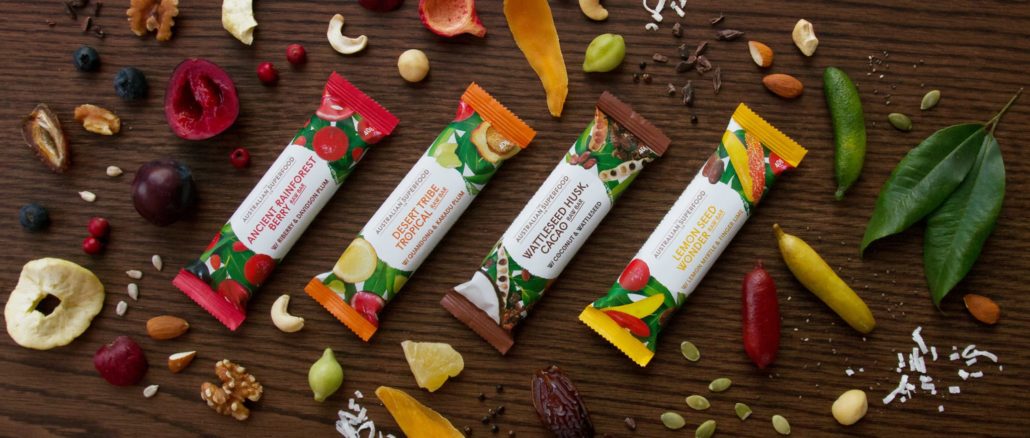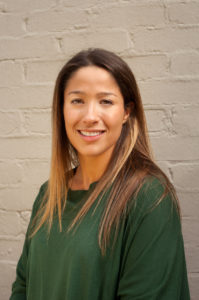
#SheBrisbane had a chat with Hayley Blieden about the benefits of Australian Superfoods…
How long did the process take of finding out out about the products and then creating your business?
Upon completing my Dietetics and Nutrition degree, I knew that I didn’t want to follow the traditional dietitian’s path and work in hospitals and clinics, my passion was focusing on designing foods to enhance the way people felt and performed.
My journey began as I set off to Alice Springs and Uluru to begin my research. I was lucky enough to visit remote communities and discovered reoccurring health issues born out of inadequate consumption of fresh foods. Community elders complained about their generally inadequate diet. Instead of relying on their traditional diet, which featured fresh bush tucker, they now consumed mainly cheap, processed fast foods. White man’s poorest eating habits had become an endemic there. My mind started to tick as to how I could help and what the future held for these people and the land.
There’s one morning that is engrained in my mind and was the changing point in my life. At King’s Canyon, I was lucky enough to experience one of Australia’s most scenic and spectacular sacred Aboriginal sites, with Jennifer Isaacs’ seminal book, ‘Bush Food’, tucked under my arm. Here, I sat looking out over a vast abyss, soaking in the rugged, beautiful vista and marveled at how Australian native foods could flourish there. This was the start of The Australian Superfood Co.
My experience in the Northern Territory drove me to explore the nutritional content and current farming practices of Australian bush tucker. I was thrilled to discover that Australian bush tucker has superfood nutritional status and realised that Indigenous communities could benefit from collecting and cultivating bush tucker. Consequently, The Australian Superfood Co. was born!
Why do you think more people don’t know about Australian Superfoods?
As our diets have shifted over the last decade, more and more people are interested in Superfoods, food that enhance their gut, digestion and over well-being. However, most are unaware of the produce in Australia. At The Australian Superfood Co we want to increase awareness, accessibility and affordability of Australian Superfoods, we aim to increase their demand and encourage their cultivation. We hope to enhance the respect for our Indigenous culture, promote the growth of Indigenous communities and foster the local food movement.
How can we incorporate these specific superfoods into our everyday diet?
It’s as simple as combining a teaspoon into your morning smoothie, a marinade on your fish or as a topping on your salad. We have such a strong recipe archive on our website, in which we educate our users and inspire them to use the ingredients in their breakfast, lunch and dinners! A favourite is Davidson Plum, which is high in potassium, calcium, vitamin E, vitamin C, zinc and antioxidants, the Davidson plum is valued equally as medicine as it is as food. It has the capacity to reduce hypertension and obesity, and contains lutein, a compound that plays a role in healthy eyes.

What are the major differences between Australian superfoods and other major superfoods
Australian Superfoods offer a range of nutritional benefits like no other fruit or herb out there. For example, Kakadu Plum has the highest recorded levels of Vitamin C of any fruit in the world, measuring 100 times the content found in an orange! Wattleseed, a rich source of protein and concentrated with potassium, calcium, iron, zinc and fibre. It’s coffee flavours make it the perfect caffeine-free substitute, but it can also be used in ice creams and baking. Another example is Riberry , which has three times the folate of a blueberry, is a concentrated source of essential minerals and is useful in aiding the immune system.
How did you determine that these particular native products were actually superfoods?
These native foods, which sustained Indigenous Australia for so long, had distinctive and intoxicating flavours which were yet to be discovered. I knew that I wanted to share these foods and flavours with Australia and the world.
Aboriginal people have been generous in sharing their knowledge and expertise about the bounty and treasures of their native land.
How have you made sure that you have ethically sourced the produce from indigenous communities?
Every ingredient we source we make sure we know the origins and the remuneration the indigenous pickers (where applicable) are receiving. We are able to make sure it is a fair percentage, and that it meets the minimum wage. If we see any discrepancy we look into it further. This has occurred.
Any general tips on creating and maintaining a sustainable healthy eating lifestyle?
I make sure to get a variety of foods into my diet, eating both seasonally and local. I love my vegetables, fruit and proteins, in which I try and incorporate into every one of my meals.
In the summer, when the weather is warmer I enjoy a green smoothie in the morning , topped with fresh fruit and our Paleo Granola.
Whereas in the winter I enjoy a warm cup of pumpkin soup with roast vegetables. My absolute favourite!
I also make sure I stay hydrated throughout the day. I keep a water bottle on my desk and in my car as a reminder to drink and sufficiently stay hydrated. It’s a really good habit to start and I highly recommend it to anyone who gets headaches throughout the day . I try to include tea into my afternoon schedule too, anything herbal goes down a treat.
I’m a big believer in balance too! Food is meant to be enjoyed, so I love having some dark chocolate after dinner or sharing an ice-cream with my daughter on the weekend.
Food should be enjoyed with good company, no guilt and trying different cuisines, flavours and textures!
SheSociety is a site for the women of Australia to share our stories, our experiences, shared learnings and opportunities to connect.
